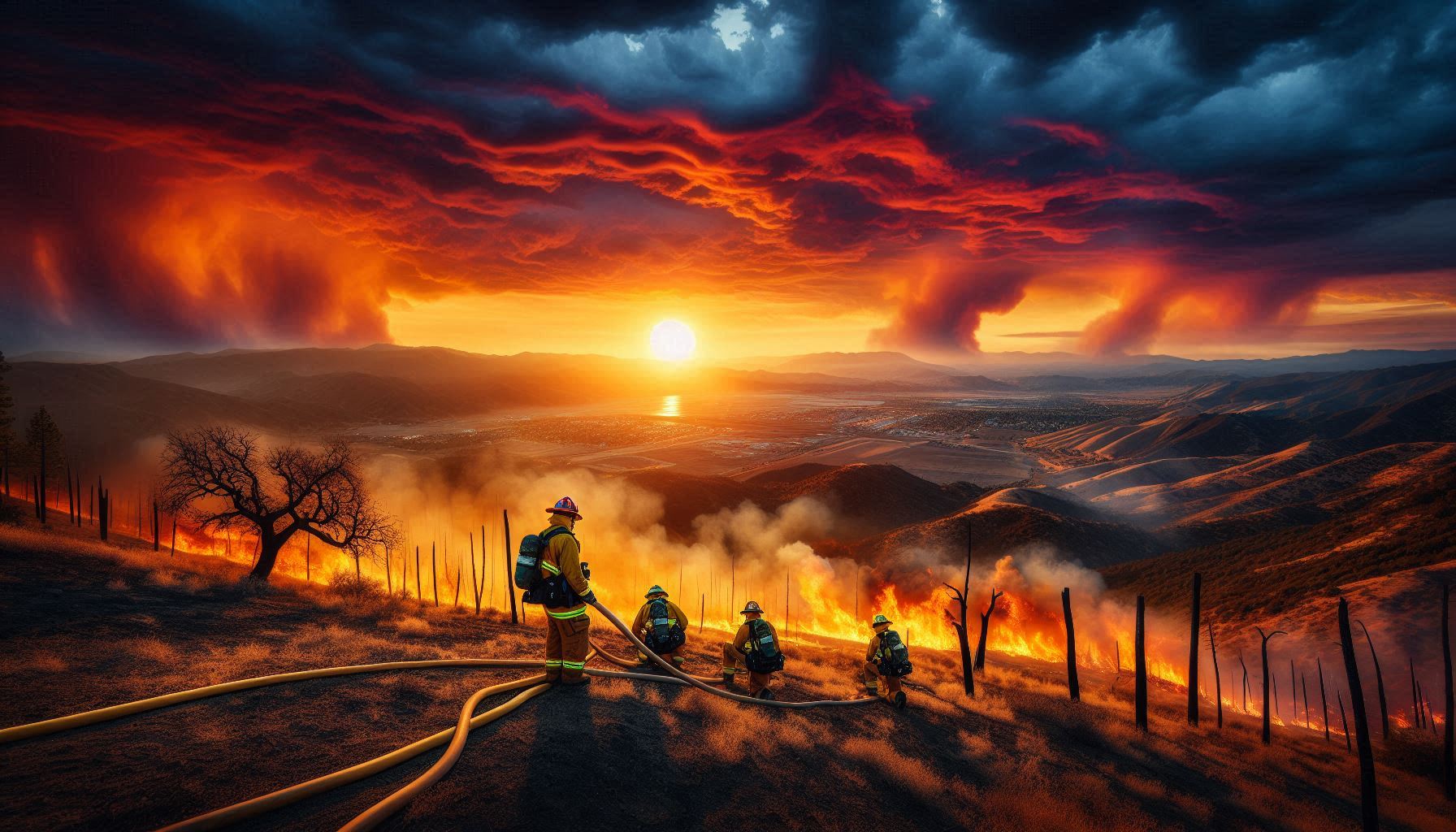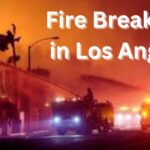California, renowned for its stunning landscapes and vibrant cities, faces an escalating crisis as wildfires continue to ravage the state. The start of 2025 has already witnessed unprecedented challenges, with January marking one of the worst wildfire outbreaks in recent history. This critical period highlights the urgent need to address the causes of California wildfires and implement effective strategies to mitigate their devastating impact.
California’s Wildfire Crisis in January 2025
This year began with Los Angeles at the epicenter of catastrophic wildfires. In just the first few weeks of January, over 300,000 acres have been scorched, leaving communities in turmoil. The Santa Clarita Valley, Malibu, and parts of San Diego County are among the hardest-hit regions. Firefighters and residents alike are grappling with the increasing intensity and frequency of these blazes.The question arises: Why do wildfires start in California? The answer lies in the interplay of natural and human-induced factors.
The devastating Sierra Fire, ignited on January 8, 2025, is now the largest wildfire recorded this year, consuming more than 150,000 acres within days. Prolonged drought, erratic weather patterns, and human negligence have all contributed to this disaster. Explore wildfire science here.
Natural Triggers of Wildfires
- Persistent Drought
California’s drought conditions, now extending into their 12th consecutive year, have left vegetation parched and highly flammable. Rainfall levels in 2024 were 35% below average, and January 2025 has continued the trend of minimal precipitation. This alarming shortage of water exacerbates the risk of ignition and rapid spread of wildfires. Persistent drought is among the key causes of California wildfires. - Climate Change
Global warming remains a significant factor. The last three years have been the hottest on record, with January 2025 experiencing an unprecedented average temperature increase of 3°F compared to historical norms. Heatwaves and dry lightning strikes have become more frequent, igniting fires in remote areas that quickly grow out of control. Climate change is undeniably one of the leading causes of California wildfires. - Santa Ana Winds
These infamous winds have wreaked havoc throughout Southern California. In January, wind speeds exceeding 70 mph have been recorded, rapidly spreading flames across natural barriers and into populated zones. The combination of high winds and dry conditions creates a perfect storm for disaster, intensifying the causes of California wildfires.
The Role of Human Activities
- Negligence and Carelessness
Human activities continue to be a leading cause of wildfires. In early January, a fire near Griffith Park was traced to an improperly extinguished barbecue pit. Similarly, another blaze in Ventura County was sparked by illegal fireworks. Human carelessness is one of the preventable causes of California wildfires. - Power Line Failures
Aging infrastructure remains a significant issue. On January 12, faulty power lines in the San Bernardino Mountains were blamed for sparking a fire that destroyed over 500 homes. Utilities are under intense scrutiny, with calls for rapid upgrades and stricter regulations intensifying. Power line failures are among the technical causes of California wildfires. - Urban Encroachment
The rapid expansion of urban areas into fire-prone regions has amplified the risks. Los Angeles’ sprawling development has increased the number of people living in high-risk zones, further complicating evacuation and firefighting efforts. Urban encroachment is another of the underlying causes of California wildfires. Discover solutions to urban fire risks.
Economic and Ecological Impact
The financial and environmental toll of wildfires is staggering. By mid-January, California has already spent $1 billion on firefighting efforts, with total damages estimated to exceed $10 billion. Entire neighborhoods have been reduced to ashes, and businesses face prolonged closures. Economic pressures often stem from the root causes of California wildfires.
Ecologically, the destruction is equally severe. Vast forests have been obliterated, displacing wildlife and destroying habitats. The loss of trees—natural carbon sinks—has further aggravated climate change. Additionally, air quality in cities like Los Angeles and San Francisco has plummeted, with thick smoke triggering health emergencies and forcing residents to wear masks outdoors. The environment pays a heavy price due to the causes of California wildfires.
Stories of Resilience
Amid the chaos, stories of heroism and resilience shine through. In Malibu, a group of residents formed a human chain to help firefighters contain a blaze threatening their neighborhood. Similarly, paramedic Sarah Torres worked tirelessly for 48 hours, evacuating elderly residents from a senior living facility. “The strength of our community is what keeps us going,” Sarah said. These acts of courage arise despite the grim causes of California wildfires.
Preventing Future Wildfires
- Advanced Detection Technology
California is leveraging cutting-edge technology to combat wildfires. Drones equipped with thermal imaging cameras, satellite monitoring, and AI-based prediction models are now operational statewide, providing real-time data to firefighting teams. Tackling the causes of California wildfires begins with early detection. - Controlled Burns
Prescribed burns are being used more frequently to reduce fuel loads and restore ecological balance. While controversial, these measures have proven effective in preventing large-scale disasters. Managing fuel is crucial in addressing the causes of California wildfires. - Legislation and Policy
New laws enacted in January 2025 focus on stricter building codes, improved urban planning, and incentives for using fire-resistant materials in construction. These policies aim to create safer communities and minimize risks, directly addressing the causes of California wildfires.
A Step-by-Step Guide to Fireproofing Your Home
- Create Defensible Space: Clear flammable vegetation and debris within 100 feet of your property.
- Upgrade Materials: Invest in non-combustible roofing and fire-resistant siding.
- Install Ember Shields: Protect vents and other openings from embers.
- Prepare an Emergency Kit: Include essentials like food, water, and important documents.
- Stay Informed: Sign up for local emergency alerts and evacuation updates.
Future Outlook
The wildfire crisis in California has reached a critical juncture in January 2025. However, hope remains. Technological advancements, stronger legislation, and community resilience provide a pathway to a safer future. Addressing the root causes of California wildfires—from climate change to human negligence—requires collective action at every level.
As California continues its battle against wildfires, the determination and resilience of its people shine as a beacon of hope. Together, we can build a fire-resilient future and safeguard both lives and landscapes for generations to come.
Key Statistics and Facts
- Over 300,000 acres burned in January 2025 alone.
- Los Angeles has recorded over 50,000 evacuations so far this year.
- $10 billion in estimated economic losses due to wildfires in January 2025.
The causes of California wildfires must remain at the forefront of our discussions and solutions, ensuring that every action taken today contributes to preventing future tragedies.


